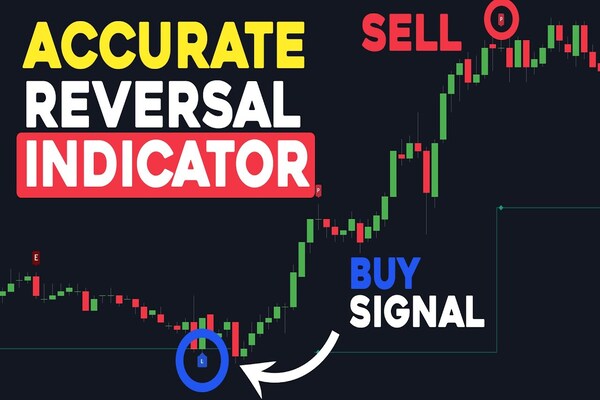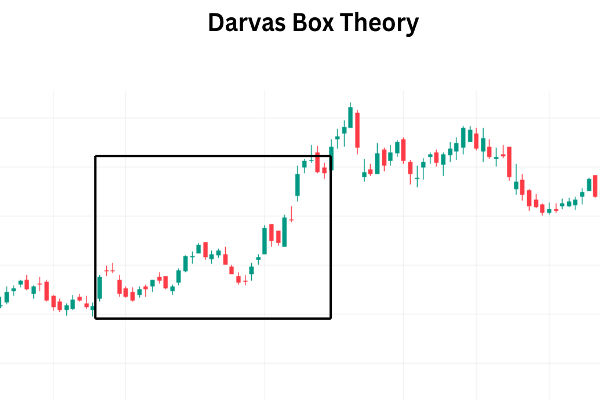When you are just starting out with stocks,the first problem is picking stocks. There are so many listed companies in the entire stock market. Which stock to choose? I really do not know how to choose. In fact,we buy stocks in order to make money,so there is an indicator we must not miss: earnings per share (EPS).
 What is an EPS indicator?
What is an EPS indicator?
EPS,known as Earnings Per Share,is one of the indicators for measuring the profitability of a company,which in Chinese is called Earnings Per Share, or Earnings Per Share,or you can say Profit After Tax. It is used to measure the amount of earnings per common share and is widely used to analyze the financial performance and profitability of listed companies.
The calculation of EPS is not complicated and is still very simple; it is the net profit of the company after paying taxes. Then divide it by the number of shares to calculate the earnings per share.
Suppose there are two milk tea stores to give you a free share. Mianyang Milk Tea Shop's milk tea is very good,selling expensive also earns more,a year net profit of $5 million. While the Xiao Wang milk tea store sells milk tea with a net profit of only $2 million a year, If you guessed wrong,you should choose Mianyang Milk Tea Store.
In fact,just look at it this way; you can only know how much money a company earns in net profit. It does not represent how much you,as a shareholder,can earn. If you want to know how much profit you can make from the stock in your hand,then you have to consider the total number of shares of both companies.
Mianyang Milk Tea Shop has a total of one million shares, and Xiao Wang Milk Tea Shop has only 200.000 shares. If you divide the company's net profit by the total number of shares,Mianyang Milk Tea Shop's EPS is 5 dollars. And the EPS of Little King Milk Tea Shop is 10 dollars. This means that if one owns shares of Xiao Wang Milk Tea Shop,he or she will receive 10 dollars. If one were to own stock in the Mianyang Milk Tea Shop Store,one would only receive 5 dollars.
Though Mianyang Milk Tea Shop is highly profitable,the company's shares are cut too small, and the profit gained is relatively small. On the other hand,Xiao Wang Milk Tea Store is the opposite; although the profitability is not so strong, the number of shares is relatively small, and the profit per share is also greater. As an investor,of course,you want the milk tea store to be more worthwhile,so you should choose Little King Milk Tea Shop.
It is also important to note that EPS is not always a positive number. For example,if one day Mianyang Milk Tea Shop does not make money but instead still loses 2 million dollars,the number of shares is still the same: 1 million dollars. Then each share will lose two dollars; EPS is -2. If the company loses money, shareholders also need to bear the loss,so EPS is one of the indicators to measure the financial ability of a company.
The above is the basic earnings per share; in fact,in addition to it,there is a diluted earnings per share. In addition to the common stock issued by a listed company,there are also preferred shares that may become common stock in the future. For example,convertible corporate bonds, warrants, or share options.
With a single capitalization, these will become common stock, resulting in an increase in the number of shares, and the shares outstanding will become larger. If the company's ability to make a profit does not follow the increase,then the company's earnings per share will be diluted. This will directly lead to a smaller EPS,much like a central bank printing money. This is why diluted earnings per share exist,because a special stock dividend is a cost similar to interest on a bond.
It is calculated by dividing net income by the number of preferred and common shares,and that is diluted earnings per share. It's arguably not the right metric, but it gives a more accurate picture of a company's financial health. There's also what's called adjusted EPS,which refers to the exclusion of some non-recurring items to better reflect a company's core profitability.
If a company has a complex capital structure,it's a good idea to look at all three types of EPS at the same time,but of course this is an assumption and one of the most conservative and prudent ways to calculate earnings. If the stock of choice is not complex,the direct use of EPS is quite sufficient.
eps indicator
| Type |
Basic equity per share |
Diluted equity per share |
Adjustments to equity per share |
| Definition |
Ordinary shares |
Potential common shares |
After extraordinary items |
| Calculation |
Net Income / Ordinary Shares |
(Net income - preferred dividends) / Common stock |
(Net income - special items)/Common stock |
| Usage |
Earnings per share |
Not widely used |
Effect of special items on earnings |
EPS indicator calculation formula:
EPS = (Net Income-Preferred Stock Dividends before Initial Stock Offering)/Average Number of Shares Outstanding
The specific steps are as follows:
First, you can find the net profit from the company's financial statements (e.g., the income statement), which is the amount left over from the company's total revenues minus total costs and expenses for a given period of time (usually a quarter or a year).
Then, if the company pays dividends to preferred shareholders,this amount needs to be deducted from net income. EPS is used to calculate earnings per share for common shareholders,so it does not include the portion paid to preferred shareholders.
Find,in the company's financial statements,the average number of the company's common shares outstanding during the period of calculation.
Then bring several values into the above formula to calculate the EPS value.
Some companies may provide both basic EPS and diluted EPS to account for potential dilutive effects,such as employee stock options. When performing an EPS analysis,investors usually focus on basic EPS because it represents earnings per share without considering potential dilution.
How high is the right EPS indicator?
Generally speaking, the higher the EPS, the better,as it represents the company's ability to make money. However,whether this EPS level is appropriate or not actually depends on what the company does,how big it is,what stage it is in,and other factors. Different industries and different companies have different EPS levels.
For example,some industries may have a higher average EPS,while others may be lower. Like those large companies,they may have a larger Market Capitalization and higher earnings potential,so their EPS may be higher, while smaller companies may have lower EPS,but they may have more growth potential.
There is also the general start-up company, whose EPS may be lower because they may still be investing in growth and not yet ready for profitability, while mature companies may have a higher EPS because they have already found a profit model.
Of course,factors such as market expectations,company objectives, risks, and rewards will also affect the level of EPS. Therefore,you can't just look at the short-term EPS level but also consider many factors to evaluate the company's situation.
How high is the eps indicator?
| Indicators |
Appropriate EPS Level |
| Industry Comparison |
Average EPS level of the industry |
| Growth Prospects |
Higher than expected market growth rate |
| Historical Performance |
Consistent with past EPS performance |
| Investment Objective |
Dependent on investors' objectives and risk appetite |
| Earnings Quality |
Level supported by core business |
| P/E Ratio |
Appropriate combination of P/E and EPS |
EPS indicator drawbacks
Knowing how EPS works,you should want to look for high-EPS stocks to invest in. That's true,but there are actually a few fatal drawbacks to the indicator itself.
One of them is that it doesn't take into account the stock price at the time. For example,tesla earns $7.44 per share,Apple earns $6.14 per share, and Berkshire Hathaway earns a staggering $55.862 per share. Isn't that exciting? You want to be a part of Warren Buffett right away. But don't rush. See how much he sells a share, and then say it. So you can't just take the size of the EPS as an indicator for buying and selling. What you need to compare is not the price itself,but the value behind it.
In addition to not considering the stock price,EPS has other artificial or special circumstances. For example,sudden one-time income or loss,such as in airline,clothing,tourism,etc., due to holidays,epidemics,Crude Oil prices,and many other factors, results in the company's earnings instability. Then there are seasonal companies, such as swimwear products,which generally sell better in the summer than in the winter. If we do a quarterly financial analysis,we will find obvious seasonal differences.
Some will even use accounting tricks to temporarily boost earnings up.Or maybe the company boosts stock liquidity by borrowing debt to buy back stock to achieve an EPA rise. For example,it's easy to boost EPS growth by acquiring a courier company outright and adding that company's profits to the statement at the time,but this earnings model isn't sustainable over time. So we can't just rely on a single quarter's EPS; the main thing is to look at a year or the company's past 12 months. Fully show the big cycle,make up for some seasonal or short-term differences,so as to be able to avoid the error of the situation.
Listed companies can use all kinds of means to directly affect the EPS,although it may be able to achieve high earnings in the short term but may not be long-lasting or even affect the company's main business. And some companies have unstable earnings that can suddenly be very high or cause a sudden loss. This kind of new company is very high-risk.
EPS indicator drawbacks
| Cons |
Description |
| No consideration of the share price |
It focuses only on earnings per share, ignoring stock valuation. |
| Influence of special factors |
Influenced by circumstances such as one-time income or loss |
| Can be manipulated |
Artificial manipulation by listed companies to increase EPS |
| Ignores financial structure |
Neglects debt and capital structure and is financially risky. |
Disclaimer:This material is for general information purposes only and is not intended as (and should not be considered to be) financial, investment, or other advice on which reliance should be placed. No opinion given in the material constitutes a recommendation by EBC or the author that any particular investment,security, transaction, or investment strategy is suitable for any specific person.


 What is an EPS indicator?
What is an EPS indicator?



